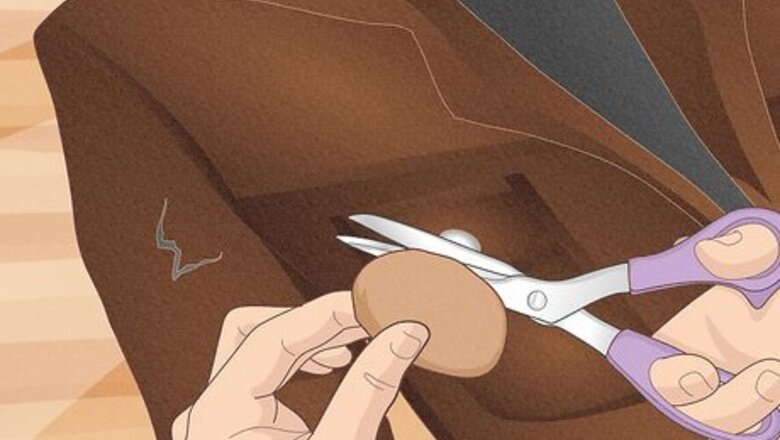
views
How do you repair rips or tears in a leather jacket?
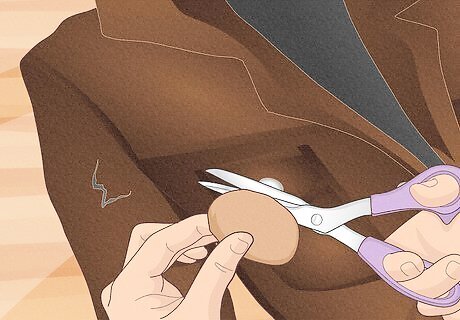
Buy a subpatch and trim it down to the appropriate size. Measure the length and width of the rip first. Then, trim down a subpatch so it's ⁄4 inch (0.64 cm) longer and ⁄4 inch (0.64 cm) wider than the rip (that way, the subpatch will completely cover the rip on all sides). Finally, round off the edges of the subpatch so it doesn't have any sharp angles. For example, for a 1 inch (2.5 cm) rip, trim the subpatch to be 1 ⁄2 inches (3.8 cm) long and ⁄2 in (1.3 cm) wide so it covers the torn area completely. Buy subpatches individually or purchase a leather repair kit (which includes subpatches and leather adhesive) at a sewing store or auto parts shop.
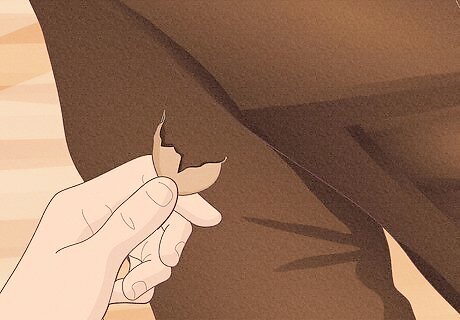
Tuck the subpatch into the tear and smooth it down flat. Use a pair of tweezers, a palette knife, or your fingers to position the subpatch inside the tear. Once the subpatch is in place, flatten it out so it’s free of folds or wrinkles. If the leather looks dirty, give it a quick wipe with rubbing alcohol.
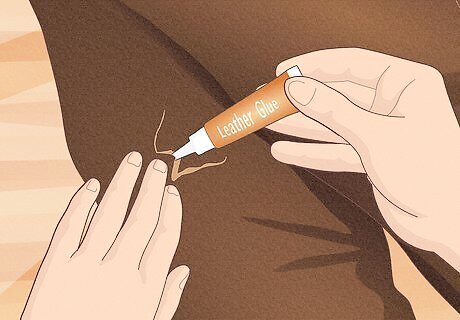
Glue the tear closed with leather/vinyl glue and let it dry for 24 hours. Dab a small amount of the leather/vinyl adhesive on the surface of the subpatch where it sits below the torn leather. Then, carefully bring the edges of the tear together and press them down for 30 seconds. Give the glue about 24 hours to set and your jacket will be ready to wear!
How do you fix scuffs or scratches in a leather jacket?
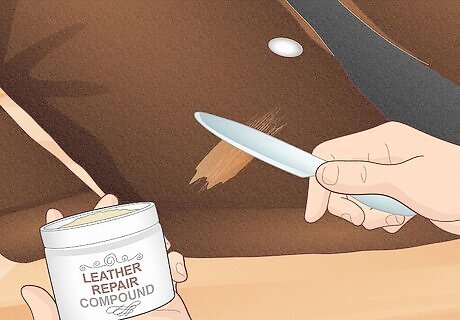
Spread leather compound/filler over the area to cover the scuff. Scoop up a small amount of compound and gently smooth it over the scuff, hole, or tear. Using the lowest heat setting, hold the blow dryer 6 inches (15 cm) away from the leather and heat the compound for 30-60 seconds. If the leather compound or filler didn’t come with an applicator, use a plastic knife or palette knife. You can buy leather compound/filler online, at home improvement stores, and some department stores.
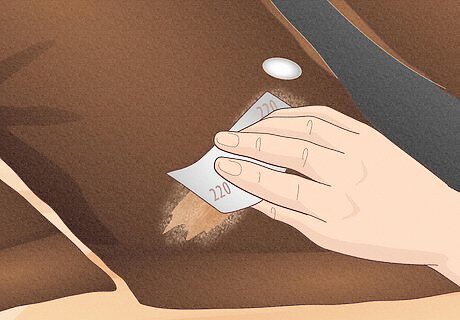
Buff the compound with a sheet of high-grit sandpaper to smooth it. Use smooth, circular motions to smooth out the filler. Keep going until the compound/filler flattens out and blends into the leather around the damaged area. If your leather repair compound came as part of a kit, it will probably include sandpaper. If it doesn’t, use 220-grit sandpaper or higher. You might need to apply a second coat of compound if the damage is still visible after blending the first coat.
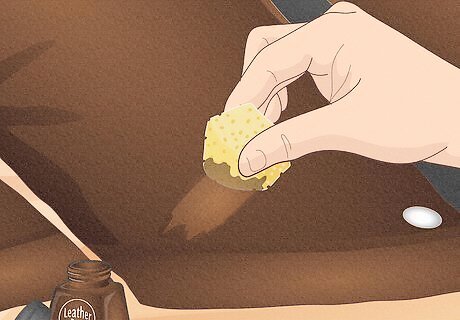
Apply 1-2 coats of leather dye if you need to camouflage the compound. If you can still see the dried compound after blending it into the leather, use an old cloth or sponge to apply matching dye over the area and let it dry for an hour. Add more coats of dye, if needed, until the compound is covered up and you're happy with the results. Leather dyes are available in a wide range of colors. Dye companies usually provide a color chart for their products, so choose the dye color that looks like the best match. Then, spot-test the dye on an inconspicuous area of your jacket to confirm it's a good match before you use it on the exterior.
What’s the best glue for repairing a leather jacket?
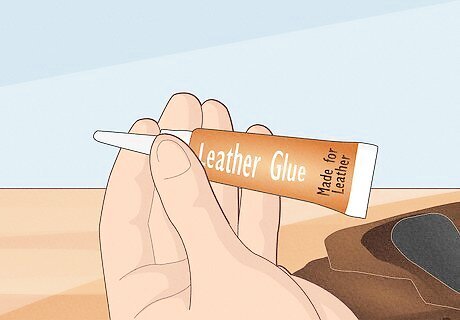
Use an adhesive specially formulated for leather/vinyl/suede. Regular fabric glue won’t give you a good bond or last very long on a leather surface, so be sure to pick up an adhesive made for leather/vinyl. These glues will be flexible and invisible when they dry, which is exactly what you need for a leather jacket. You can use super glue in a pinch for small repairs, but it’s not ideal since it isn’t flexible once it dries.
How do you bring a leather jacket back to life?
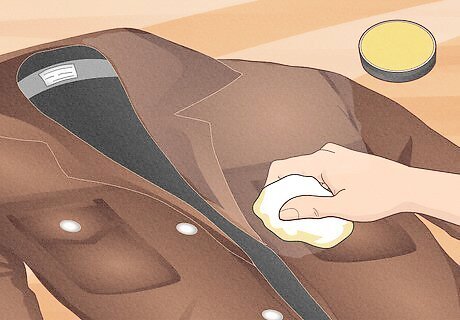
Apply saddle soap with a dampened cloth to remove dirt and grime. Wet a cloth and wring it out to get rid of excess moisture. Then, rub the cloth on the saddle soap to work up a lather and apply the soap to dirty areas of the leather using circular motions. Wipe off any excess soap with a clean, damp cloth and wait 10-15 minutes for the leather to dry. Before applying saddle soap to the exterior, spot-test an inconspicuous area on the inside of the jacket. Make sure the soap wipes off easily and doesn't leave behind a stain. Generally, you only need to clean a leather jacket with saddle soap once a year.
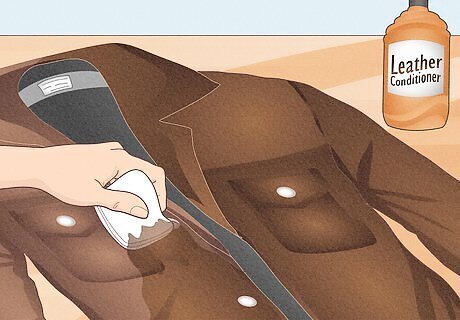
Follow with leather conditioner to restore moisture and softness. Saddle soap removes the leather's natural oils, so it's important to re-moisturize the surface right away to prevent cracking. Use a soft cloth to apply a thin layer of leather conditioner to the jacket's exterior using circular motions. Let the conditioner soak in for about 20 minutes. Then, wipe the leather with a clean cloth to remove any excess conditioner and you're all set. Always condition your leather after cleaning it with saddle soap and any time you accidentally get the jacket wet (like after getting caught in a rainstorm).
What's the best conditioner for a leather jacket?
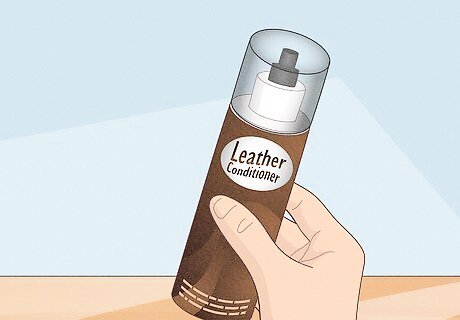
Go with a cream or spray-on leather conditioner formula. Avoid leather conditioners made for car seats, horse saddles, and leather upholstery. For a leather jacket, use a cream or spray-on leather conditioner formulated for leather clothing. Instructions may vary by brand, so be sure to read the directions and follow them exactly. Condition your leather jacket once a year to keep it in tip-top shape.
How much does it cost to repair a leather jacket?
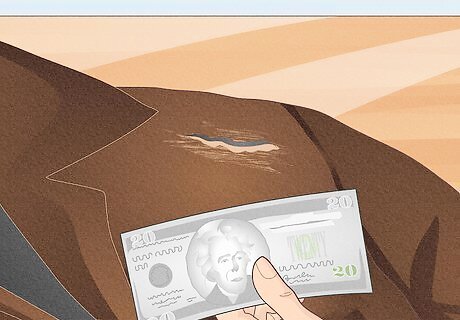
Simple DIY repairs shouldn’t cost you more than about $20. Subpatches, leather adhesive, leather compound/filler, and leather dye aren’t expensive items. A full leather repair kit with everything included usually costs about $20. Professional repairs could cost up to $100 or so, depending on the severity and location of the damage. In most cases, you can repair the jacket at home for a fraction of the cost. Home repairs are easy to do and most people are very happy with their results!




















Comments
0 comment